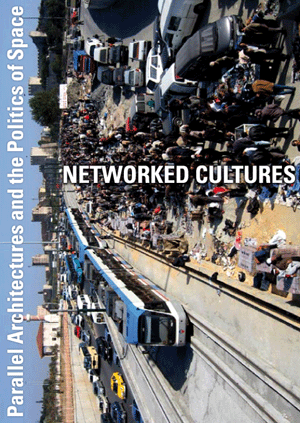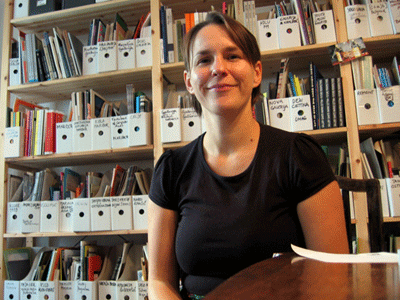_loginregistrieren_database_5 Factories - Worker Control in Venezuela Dario Azzellini & Oliver Ressler _ALMOSTREAL ECF _AnArchitektur Jesko Fezer _Arizona Road Azra Aksamija _Balkan Konsulat rotor _Bata-ville: We are not afraid of the future Nina Pope + Karen Guthrie / www.somewhere.org.uk _Black Benz Race krcf in collaboration with Felix Stalder, Arben Gecaj, Faton Topalli and Osman Osmani _Black Sea Files Ursula Biemann _Camp La Jolla Military ParkOwen Mundy _CHANGE REALITY: Renaming the Streets of Zagreb REINIGUNGSGESELLSCHAFT _Conceptual Paradise. There is a place for sophistication Stefan Roemer _de-regulation Irit Rogoff, Kutlug Ataman, Stefan Roemer_news ____________Bloomberg SPACE, London ____________Kumu Art Museum Tallinn ____________Open Space, Open Systems - Vienna ____________CAA 2011 Conference, New York ____________Forum Stadtpark, Graz ____________Symposium, Istanbul ____________lungomare, Bozen/Bolzano ____________Metropolis Biennale 2007-17, Copenhagen ____________new publication available now ____________Mestna Galerija, Ljubljana ____________Livestream of Networked Cultures documentary ____________ |
_ConversationsMargarete Makovec
Margarethe Makovec and Anton Lederer
PM/HM: < rotor > has instigated an enormous network of collaborations between creative practices in southeastern Europe. How did you come to pursue this curatorial approach of connecting with other initiatives? Margarethe Makovec: Anton Lederer and I launched < rotor > in the mid-1990s as a kind of laboratory of discovery. For us it was some sort of work in progress or, let’s say, a learning-by-doing process. We discovered a very interesting area in Graz, the second largest town in Austria. It was the district called Gries and at the time densely populated by war refugees from ex-Yugoslavia. So we moved into a shop at street level and started out by focusing on what we found around us. What’s more, the border to Slovenia is quite close, about thirty kilometres from Graz. So during this same period, we also began travelling a lot. Soon we discovered that it’s the same distance from Graz to Vienna as it is to Ljubljana. Everything developed organically, and I think we learned most by curating exhibitions on our own. We’ve always had a wide range of interests: one of them involved putting together exhibitions and discussing political issues in Austria as well as in a larger European context. Others concerned establishing an artist-in-residence exchange programme and an archive on contemporary art from southeastern Europe. These interests provided the basis for everything else, including travelling and meeting people. Actually we’re almost more interested in making and sharing contacts than keeping them to ourselves – the latter would probably make us feel somewhat claustrophobic. We’ve always wanted to spread the information we gather. We like doing research, and talking to artists and everyone else who happens to be around. If you travel to Kosova and see how Prishtina or Peja (Pec) works, if you meet these very young artists in their twenties, and you see the contexts they’re operating in, then it’s easier to bring them into another, let’s say, European curatorial context. PM/HM: Using the umbrella term Middle-South-East (MSE) Meeting, you’ve organised several trans-European gatherings of artists and cultural producers. The most recent one took place in Prishtina/Kosovo in November 2006. How has this operational format evolved over the years? Margarethe Makovec: It started with Manifesta 3, when Gregor Podnar was artistic director of Škuc Gallery in Ljubljana. Gregor asked us and five other institutions to curate an exhibition at Škuc Gallery. For the opening day of Manifesta, we organised a kind of conference to which each of us invited five people – so we were quite a large group at the first MSE Meeting. And it showed that a network already existed – a fine moment considering our networking aspirations and the fact that such attempts sometimes turn out to be a bit superficial. If you bring three curators together, it’s not a network, and especially not one that has grown. Anyway, we continued in this spirit and arranged gatherings, which we called MSE Meetings. Middle-South-East is a term that is quite open in all directions. In 2002 < rotor > organised a more internal meeting with a large number of participants. Balkan Konsulat was a direct result of this meeting. The idea of this project was to work out a way to present networking and the people who enable a certain art scene, for instance, Erden Kosova in Istanbul or Michael Koleček in Prague. With Balkan Konsulat we tried to establish a platform to present partner art scenes and their respective work philosophies. For the exhibition Balkan Konsulat Prague, for instance, Michael Koleček opened his network to include works from German, Polish and Slovak artists. The 2004 meeting in Graz revealed still another layer of MSE’s fluid character, as it also involved people from, e.g., Holon and London. Middle-South-East is truly growing in all directions. The last meeting took place in 2006 in Prishtina where the situation was and still is rather unstable, so I think meeting there was in itself an important political statement. PM/HM: What challenges does one face when engaging in such a variety of different locations? Do you think there are ways of developing a sense of sustainable community among people working in very different situations? Margarethe Makovec: Of course, all these countries are really different and their art scenes are, too. For example, in most of these countries there’s no money and no art market. If you look at the art scene in Bulgaria or Romania, for instance, new spaces of contemporary art are just beginning to emerge, following the example set by the Soros Centres, which covered the field in the mid-1990s. There are so many different developments and political backgrounds. Tito’s ex-Yugoslavia was different from Ceausescu’s Romania. And this means their work conditions and art histories are very different, too. And so our focus has always been on meeting people who have a certain interest in exposing these developments in their work. These people are not directors of institutions in the usual sense. Some of them have launched archives of their own in private spaces, like Lia and Dan Perjovschi in Bucharest. Out of necessity, they’ve developed a different method for bringing things together. And as always, if you’re not part of a particular scene, then you’re considered an outsider. And normally this means you’ll have to bring money with you if you want to do a project. But through < rotor >, we feel like we belong to this big “family”. There’s a very strong feeling of trust within the group we work with, because we’re constantly trying to connect people. As always, it’s important to think about the format of your work. In the case of real*utopia, for instance, we involved a lot of artists from the MSE region in a public art project in Graz. We were interested in how people who were originally from Turkey but had lived in Austria for several years would react to an art intervention by a Turkish artist. This in itself is an interesting question, but when the work is shown on a prison wall, it has still another layer of context. For us it’s more interesting to work in such frames. PM/HM: It seems that archival work plays an important role in structuring the knowledge production of such projects. Margarethe Makovec: Absolutely, it all started as a working archive for Anton and me, especially for curating exhibitions. For quite a long time, there was a lack of information about contemporary art in southeastern Europe. So we began concentrating on updating the data in our archive. These days, a lot of people come to use it. It’s not public in the sense that we have regular office hours, but in the sense that people can work here and we provide them with all the material they need. In a way, it has become the real backbone of our work, and for others, too. For example, B+B from London have done research in our archive. I guess, it’s just about using all one’s contacts and working with people who share similar concerns. This is an interesting and contagious process, and we think it’s really how things should be. What we’ve observed – not only in our own field but also in other contexts – is the omnipresence of networks. A lot of them aren’t meant for the long term, sometimes they aren’t even meant to outlast a single event. That’s not our plan, as we’ve never been interested in immediate results. Our MSE Meetings, for example, have more to do with sharing information. People often tend to begin by thinking about results, but then you suddenly have fifteen, twenty or thirty people sitting there together, and they all come from different backgrounds and directions. So in the end you have all sorts of ideas, but no specific results. And yet when there are results after all, as with Balkan Konsulat or large MSE Meetings, then they have come about naturally. You have some ideas and you just work on them.
|
_broadcasts_conversations+ Ana Dzokic and Marc Neelen+ Ayreen Anastas and Rene Gabri + atelier d'architecture autogérée (aaa) + Asya Filippova + Sophie Hope and Sarah Carrington + Branca Curcic + Christoph Schaefer + Campement Urbain + Claudia Zanfi + Despoina Sevasti and Poka-Yio + Erden Kosova + Helmut Batista _textsRadio as Spatial Practiceby: Paulo Tavares Survival Kits: Artistic Responses to Globalizationby: Marga van Mechelen What Ever Happened to Cultural Democracy?by: Sophie Hope I don't know how to explain ...by: Anca Gyemant Trading Placesby: Peter Moertenboeck & Helge Mooshammer Milosevic as Architectby: Srdjan Jovanovic Weiss When the Unavoidable Knocks at the Door ...by: Gulsen Bal Tracing Translocality: The BlackBenz Raceby: Felix Stalder travelling lexicon towards a global positioning systemby: Celine Condorelli |
